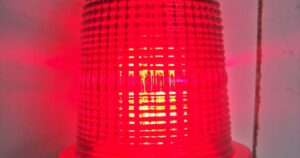 The FCC inspector is in the lobby and wants to inspect your station! This can be an extremely stressful situation if you aren’t prepared. Suddenly you envision all the things that you might have neglected by accident or procrastination. But he is here and he is not coming back later. Of course the best course of action is not to procrastinate and make sure your Public File is in order and neatly organized. Make sure your logs are meticulous, but eventually we are all going to miss something.
The FCC inspector is in the lobby and wants to inspect your station! This can be an extremely stressful situation if you aren’t prepared. Suddenly you envision all the things that you might have neglected by accident or procrastination. But he is here and he is not coming back later. Of course the best course of action is not to procrastinate and make sure your Public File is in order and neatly organized. Make sure your logs are meticulous, but eventually we are all going to miss something.
Beyond planning, there is a bit of insurance broadcasters can put in place to avoid costly fines and embarrassing FCC inspections. Interestingly many stations don’t take advantage of this valuable insurance – a way to make the FCC inspector happily go away or never show up at all.
What is this valuable service that could make such a nightmare simply go away? A sort of rehearsal inspection where you cannot be fined for violations found during the inspection. Many state broadcasters associations have made arrangements with the FCC to not perform random inspections of stations that pass the ABIP inspection for three years. You simply pay your state broadcasters association to inspect your station instead, post the certification, and sleep better.
This is just like an FCC inspection, without the FCC inspector. You will still of course be required to correct any infractions, but they will not be reported to the FCC. Once the infractions are corrected, a certificate of compliance will be issued. In addition to a technical inspection, the association inspector is well trained on matters of the Public File. They will work with you going through the self-inspection checklist, and help you answer the questions properly.
However, if you are operating with blatant violations, with variations from your license – ie, a six bay antenna when you are authorized for four, you can expect a visit from the real FCC inspector. If your transmitter is improperly maintained and wiping out the local EMS, you can also expect a visit from the FCC.
Contact Leo at: techtips@nexusbroadcast.com
 The higher the alcohol content the better. This will help to remove any residue and evaporate the liquid quickly. Be sure to shake out the excess as much as possible – you might use a bit of compressed air here to help. Be sure to wipe all the moisture off of the outside of the device. Now here is the big surprise, place the device (and battery) in a small container of uncooked rice. Use a sealed container and snap the lid in place. Wait till the next day and try out the device. You might be surprised when it functions perfectly.
The higher the alcohol content the better. This will help to remove any residue and evaporate the liquid quickly. Be sure to shake out the excess as much as possible – you might use a bit of compressed air here to help. Be sure to wipe all the moisture off of the outside of the device. Now here is the big surprise, place the device (and battery) in a small container of uncooked rice. Use a sealed container and snap the lid in place. Wait till the next day and try out the device. You might be surprised when it functions perfectly. You will need some key information when you call NOTAM, such as the tower registration number. If you are not sure of the tower number, generally it is on the tower fence or building, and you should also be able to find it on your license – it is required to be posted at the tower location. Be sure to write down the reference number the operator gives you. It is best to describe the outage in your log.
You will need some key information when you call NOTAM, such as the tower registration number. If you are not sure of the tower number, generally it is on the tower fence or building, and you should also be able to find it on your license – it is required to be posted at the tower location. Be sure to write down the reference number the operator gives you. It is best to describe the outage in your log.